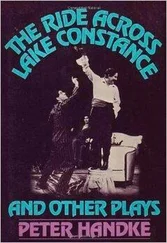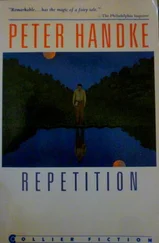What effect did the images have? They ennobled the day for her. They ratified the present for her. She lived off them, which also meant that she used them and made good use of them. She even employed them for her work; her ventures; her deals. If she had an almost magical (“legendary,” as the articles put it) ability to focus on the matter at hand, to display “supernatural presence of mind at the decisive moment,” not only having all the facts and figures in her head but also dazzling her partner or counterpart in negotiations by serving them up as “a numerical witches’ brew,” she owed this talent to something she had not yet revealed to any interviewer — and what words would she have chosen? — namely, to the intervention of these images of hers in her workday.
Does this mean that the images were subject to her will after all, there to be summoned at will or as needed? No. They remained unpredictable. But over time she had discovered various methods of activating her “reserves.” It was not a question of specific techniques, certainly not of tricks, but rather of fundamental attitudes and a whole way of living.
Yes, she had aligned her whole life, not merely her profession and her existence as a “queen of finance,” to accommodate these shooting images. What fundamental attitudes and behaviors were especially productive in this regard? She, who by nature (or by virtue of her profession?) was little given to shyness, proved shy when it came to speaking of such matters, but she could offer hints: a kind of mindfulness in everyday actions; a willingness to take detours; not avoiding moments of absentmindedness when in the presence of others, but rather letting herself succumb to them; physical effort — not athletic, preferably manual labor — for sustained periods and at a steady pace, to the brink of exhaustion, when the images might begin to glow … (instead of an exercise room in her house she had a workshop).
Just as she lived off the formation of images in every sense, she also lived for it. And she did not deploy her reserves—“Never use this word again!” she instructed the author — for any kind of war. A single image, mobilizing itself and her, was all she needed, and the day would acquire a peaceful aura. These images, although devoid of human beings and happenings, had to do with love, a love, a kind of love. And they had penetrated her since childhood, some days fewer of them, some days whole swarms of these shooting stars — always taking the form of something she had actually experienced in passing — sometimes completely absent, a non-day. And she was convinced that this happened to everyone, to a greater or lesser extent. No doubt the specific image always belonged to the individual’s personal world. But the image itself, as an image, was universal. It transcended him, her, it. By virtue of the open and opening image, people belonged together. And the images did not impose anything, unlike every religion or doctrine of salvation. Except that as yet no one had managed to tell the story of these images properly? Had also not found this phenomenon as earthshaking as she had? Had also not found the courage? (She certainly had not?)
To tell the truth, she was not even all that shy or modest when it came to this topic so dear to her heart. Over the years she had often felt the urge to spread the word of her remarkable and memorable encounters with the shooting images, or image showers. Was it possible for a modern woman, not just a woman of the Middle Ages, to have a sense of calling? The idea became more and more compelling: she had to reveal what she knew. And finally the message had appeared in glowing letters before her eyes: Now or never. The moment had come to tell the world! And, strange to say — as if this were part of her calling — it would soon be too late, not only for her but for the world at large. Everywhere under the sun the images were dying out. She had to entrust herself to some author or other — not to lay out everything for him in minute detail, but to hint at this or that and let him describe the problem as he saw fit. For she was convinced it was a problem, one of epochal proportions, decisive for the future, one that should at last be made productive, but above all a lovely one. And wasn’t a lovely problem the ideal basis for an expedition, including a narrative journey like this one?
This urgent sense of a calling was new to her. Some commentators saw it as an outgrowth of her success, which for quite some time had been consistent, unsurpassable, and above all invulnerable: missionary zeal as a result of unequaled success coupled with invulnerability. Others, on the contrary, saw her proud, self-chosen solitude as the cause. And there were still others, for instance the author she finally commissioned to write the story, who suspected, or “had the inspiration,” that her “quest” expressed a “terrible guilt”—he unintentionally turned the tables on her this way during their first conversation. “And you expect to achieve some sort of expiation as a result of expressing these matters?” No reply.
In point of fact, even though this was not the source of her specific guilt, she had already fooled many people by letting images play a part in her everyday and professional dealings. It was hardly ever done on purpose. The images never came on demand; if they came at all, it was involuntary. But whenever one of her images shot through her, as long as it was with her, she emitted a special radiance that instantly filled the room. Those present when this happened could not help referring this radiance to themselves. In business situations they promptly felt as though she could see right through them, whereupon they surrendered all their ulterior motives and became putty in her hands; they followed wherever she led, essentially doing her bidding.
That almost never redounded to their disadvantage: usually both parties benefited. The effect of the images was no illusion! On those rare occasions when things went badly, again both parties suffered. Thinking himself betrayed, the other party might then try to attack her physically (in her business dealings she was never perceived as “a woman”); when this occurred, the images would intervene in perhaps the most remarkable way of all: in the face of a threat — and more than once when a weapon was involved — an image would turn up, as unexpectedly as consistently, and each time only one, which, however, was so powerful that it projected a radiant shield between her and the attacker. Poof! a deserted sandy playground by a canal in Ghent, and the enemy was an enemy no longer. Poof! the diminutive library along the city wall of Ávila, with a view from its windows of the foothills of the Sierra de Gredos, and the woman became untouchable to her attacker.
But in private life, according to the stories that made the rounds, the images inflicted quite a bit of harm, even destruction and devastation. In that realm the images could be mighty deceiving, so people said. The radiance or glow emanating from her, the woman, when they were in her, could be interpreted by the person who happened to be present only as benevolence — no, as commitment, compliance, surrender. Nothing brighter, more open, more naked than the face of this stranger, this woman who unexpectedly turned to me with this radiance brighter than any ordinary woman’s smile. Desire, love, compassion: all wrapped up in one. And then the recoil. Yet the radiance persisted. And that was what turned us deluded lovers into madmen or wimps, or both. And since violence was out of the question with her, that woman! our only recourse was to curse and abuse her. “You did not keep your promise.”—“You betrayed me.”—“You lead everyone down the primrose path.”—“She is the epitome of coldness and heartlessness.”—“A sphinx who watches with eyes aglow as we tumble into the abyss.”
Читать дальше












